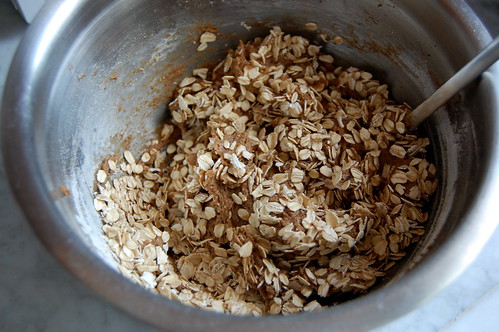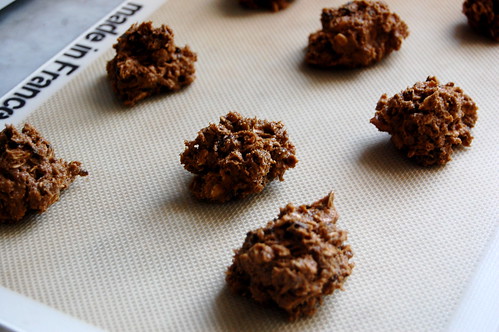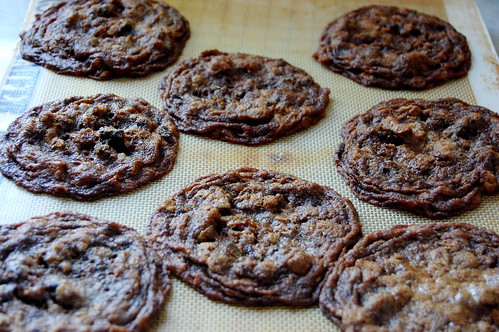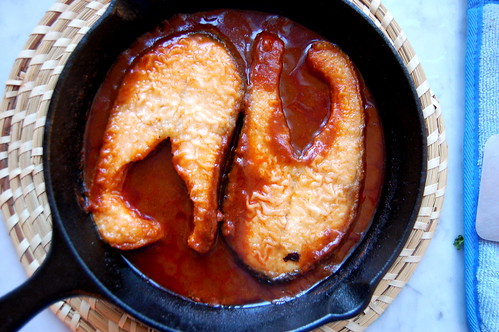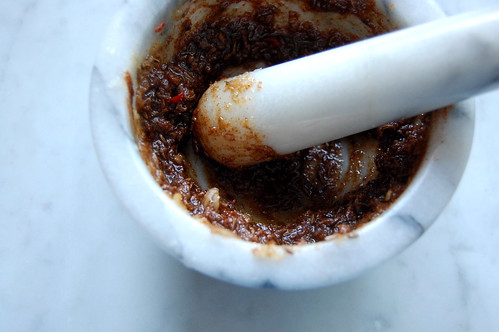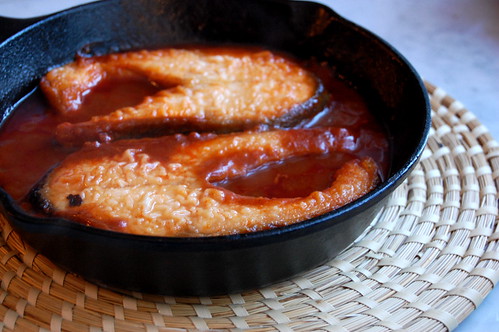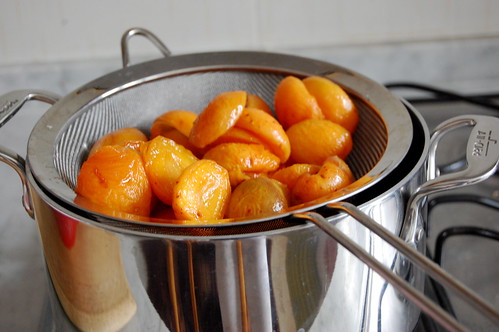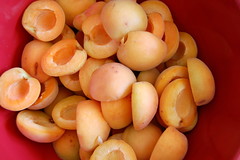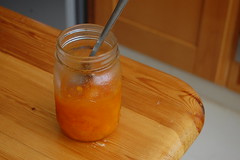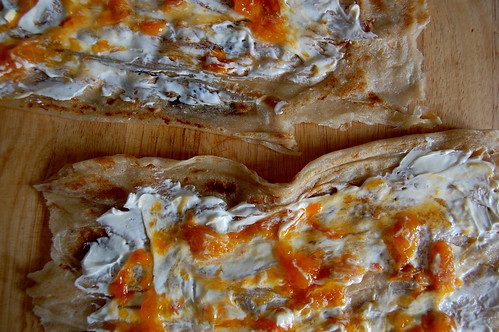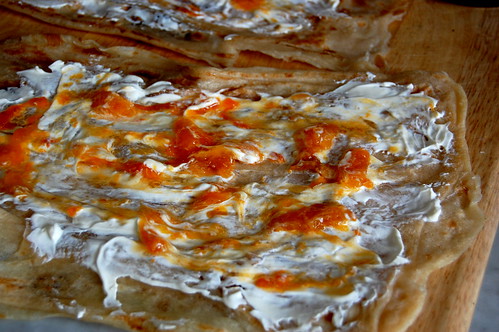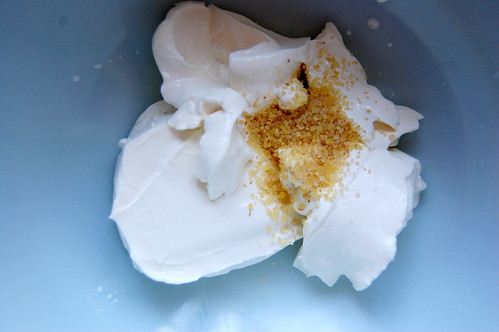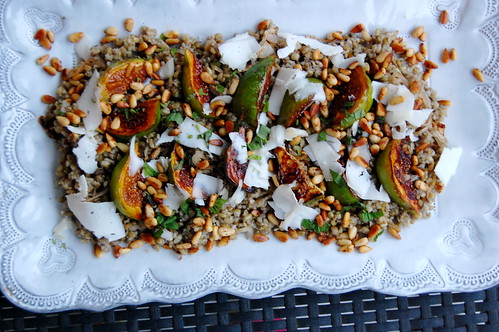
It is August, and I'm chasing memories again. I grew up spending August at the beach, crinkling my toes in the sand, lying on beach towels, plowing through one novel after another, riding a bike with an ice cream cone in one hand, eating corn on the cob, and no August since has ever quite lived up to those expectations. My mother used to say that a good day was when you got to spend all day in your bathing suit. I agree. She was a swimmer, and though I did not inherit her aqueous skills, I share a need to be close to, in, and around water, especially in the summer.
Paul, on the other hand, hates the beach. He cringes at each grain of sand that sticks to him, swelters in the heat, and crouches miserably under the shade of an umbrella until I will finally release him from that sandy, salty, sweaty prison. Don't get me wrong, a crowded beach can be a terrible, horrible thing. Recently,
on vacation in France, we found refuge in the barrier islands, taking the ferry out in the morning with our beach towels and sunscreen and books, finding a quiet beach with enough shade for Paul, a few other French families dotting the sand.
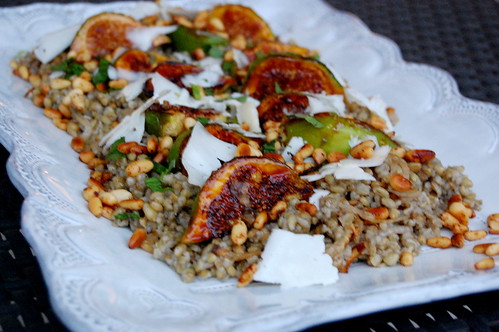
Still, it has me thinking about how to find some solution for my lust for the August beach vacation, which admittedly is tied to a certain nostalgia for the freedom of childhood summers. Buy a beach house, even though we will live abroad for the foreseeable future? That seems extravagant (and totally out of our budget, but I can dream right?). And while Paul will never share my love of the coolness of your skin after you take off your damp bathing suit at the end of the day, can I find a place where he can love the beach too?
If I had a place on the beach, this is the sort of thing I'd make. It's from a new cookbook that I'd probably bring to the beach with me too, Salma Hage's "
The Lebanese Kitchen." Maybe I'd serve this salad alongside a grilled protein, but it's pretty great on it's own. You really can't substitute for the smoky chewiness of freekia, a type of green wheat, but you can order it online (I've been using the same bag I got in Jordan for about 2 years). You cook the freekia with some spices while you also caramelize some onions. You combine those, and then you sear some figs so they have this great caramelized edge, and you toss some mint, a sharp cheese like feta or goat cheese, and pine nuts on top. There's a few steps, but you only need two pans and a good knife, because no one wants to be doing lots of dishes when you're on vacation.
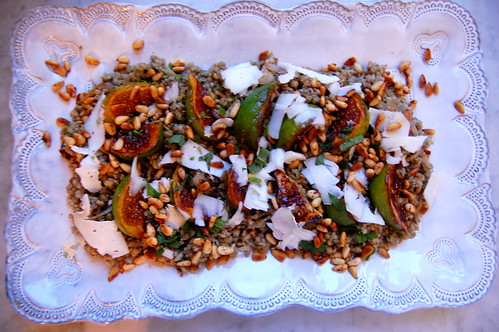 Freekia Salad with Caramelized Onions, Figs, Goat Cheese, and Pine Nuts
The original recipe called for a mixture of fresh and dried figs, but we had plenty of fresh figs. If they're not in season in your area, dried figs could work, though I haven't tried it.
Freekia Salad with Caramelized Onions, Figs, Goat Cheese, and Pine Nuts
The original recipe called for a mixture of fresh and dried figs, but we had plenty of fresh figs. If they're not in season in your area, dried figs could work, though I haven't tried it.
2 white onions, thinly sliced
1 cup freekia (cracked green wheat)*
1 tablespoon butter
1/2 teaspoon allspice
1 teaspoon cinnamon
salt, olive oil
4-6 large figs, quartered
3 tablespoons sugar
1 sprig of mint, leaves removed and sliced
100 grams /3.5 ounces (or to taste) of a sharp cheese like feta, soft or hard goat cheese, crumbled or shaved
1/4 cup pine nuts
1. In a large saute pan heat a good glug of olive oil. Add the sliced onions, pinch of salt, and cook over medium-low heat, stirring occasionally, until the onions are deeply browned and caramelized, about 40-45 minutes.
2. Meanwhile, in a medium sized pot over medium heat melt the butter. Add the freekia, cinnamon, and allspice and stir, toasting the grain for 2-3 minutes. Add 2 1/2 cups of water and 2 bing pinches of salt. Bring the water to a simmer, cover pot and turn heat to low. Cook until water is absorbed and grains are puffed and tender, about 30 minutes.
3. Place the caramelized onions into a serving bowl when the are done cooking (reserve the pan). When the freekia is done let it cool slightly, then scoop it into the serving bowl and add more olive oil and salt to taste, and toss everything to combine.
4. Place the sugar in a shallow bowl. Heat up the same pan that you used for the onions (rinse it out if it's really grungy) with just a smidge of olive oil coating the bottom, over medium-high heat. Dip one side of a cut fig piece into the sugar, then place it sugar-side down into the saute pan, adding as many figs as will fit at once. As your figs become caramelized and well browned on the one side, transfer them to your serving dish.
5. Again in the same pan (it will have the sugar bits stuck to it and that's okay), add in the pine nuts and toast briefly, tossing them around until they're lightly golden. Add the pine nuts to your serving dish. Now you can finally put your pan in the sink!
6. Sprinkle the mint and cheese over your salad and serve warm or at room temperature.
*
Freekia (frik/freekh/frikiah) can be ordered online from Kalustyans here
You might also like:
Freekia with Fava, Preserved Lemon, and Almonds
